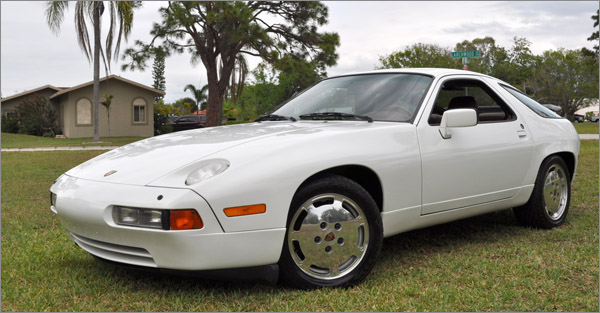This is a stunning, classic Porsche 928 S4. Grand Prix White over mahogany leather with less than 49,900 miles. This Florida-owned Porsche is being sold with the original window sticker and owner’s packet.
This car has lived a pampered life and everywhere you look that is evident. The car has a 5-liter V8 engine with 4-speed automatic transmission and options, including power steering, seats, windows and sunroof. The 928 S was one of the fastest production cars sold in North America in 1985-87. This Porsche is a piece of sports car history that the next owner can enjoy and appreciate for many years to come.

